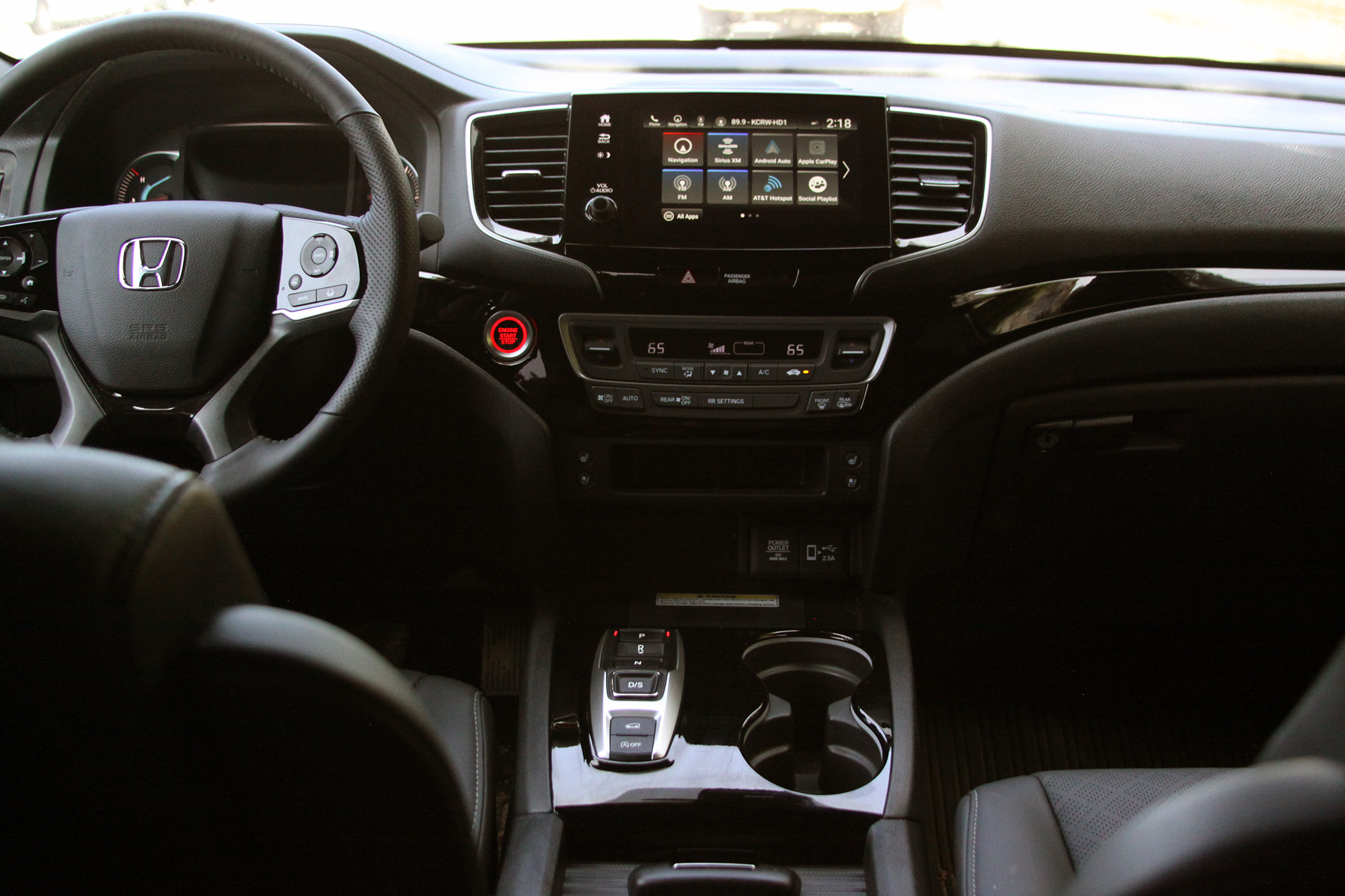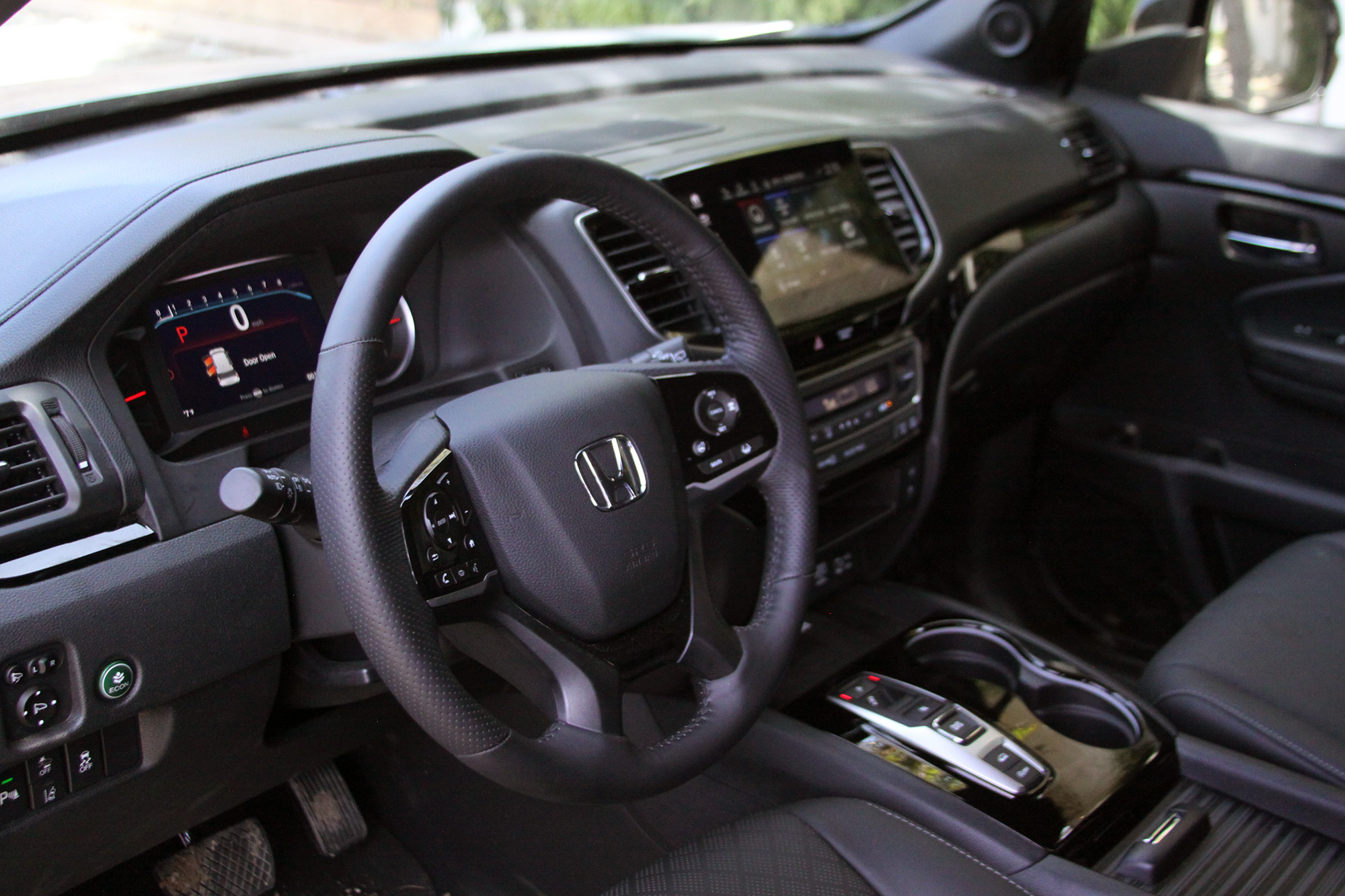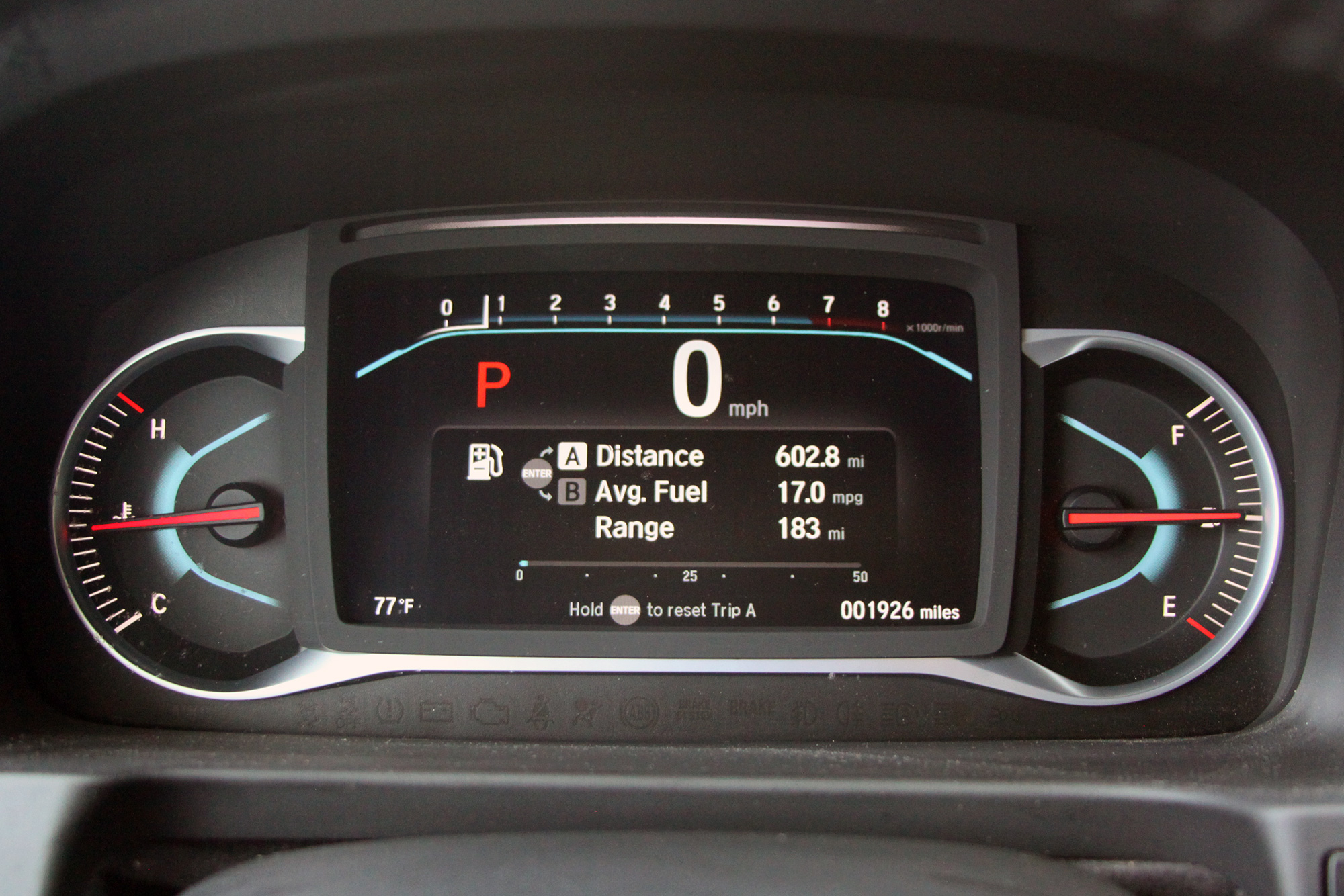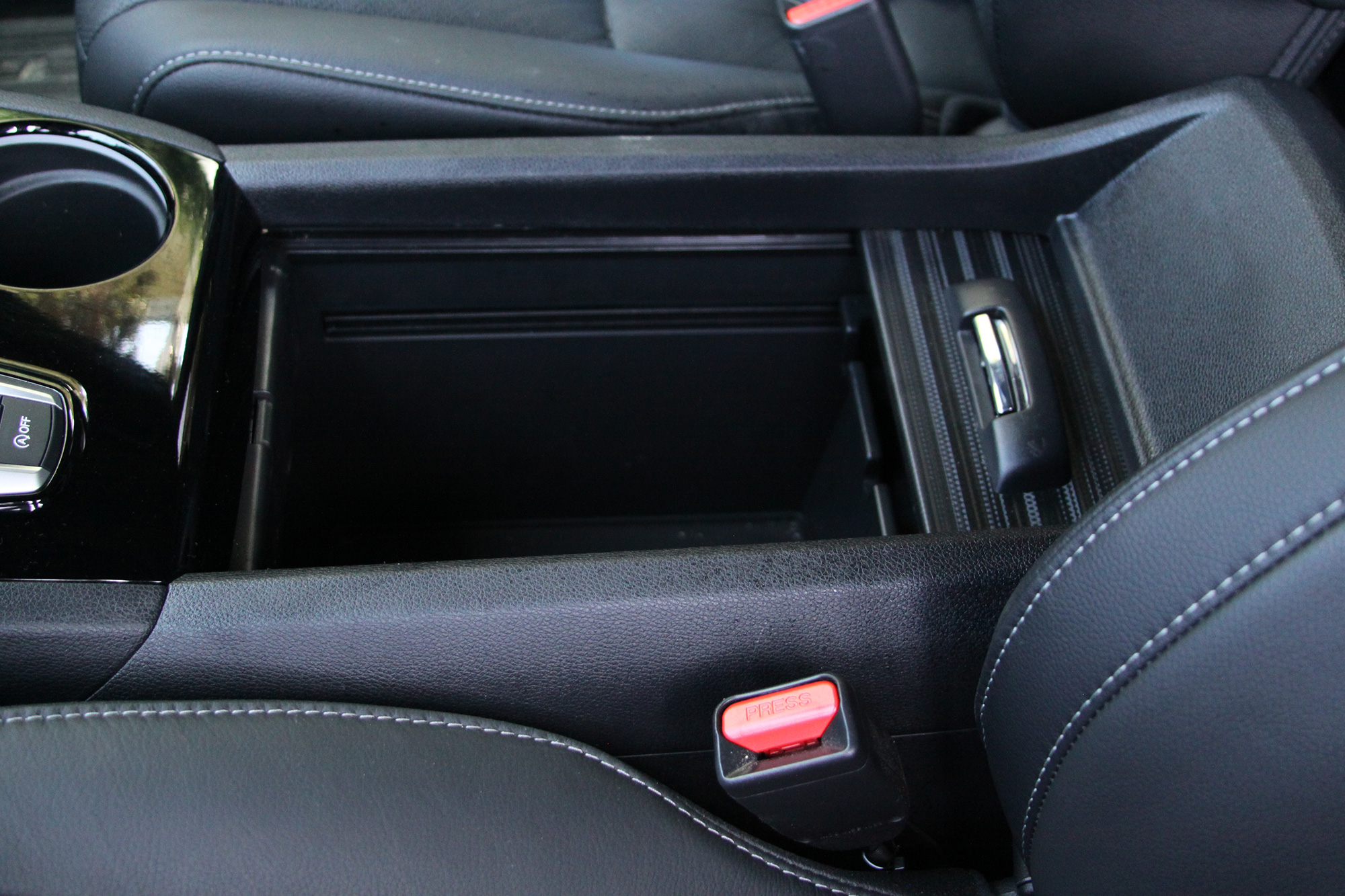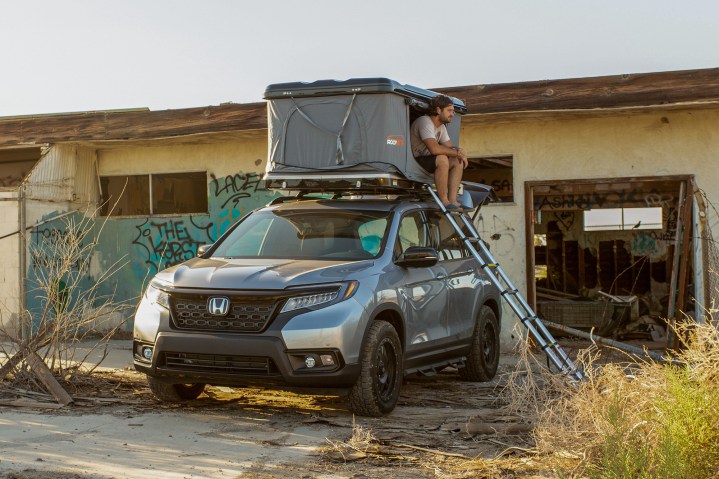
Welcome to the year 2025. The ice caps are gone, society has crumbled, Twinkies have run out, reality TV is no more, and the comedy stylings of Carrot Top are (thankfully) a distant memory. You were warned that you should buy a refillable water bottle and to stop leaving the lights on in your empty home, but you didn’t listen and now the planet is a hellscape of building carcasses and roaming gangs of scavengers. Any semblance of worldwide government is gone, as are power grids and 12-packs of La Croix. Luckily, you have a car outfitted for this cruel new world. You were lucky enough to stumble upon the one-of-one Honda Passport Adventure Lifestyle Project.
Built by Jsport in 2019 as a Honda concept vehicle for the Overland Expo West, the Adventure Lifestyle Project includes a lift kit (1.5 inches up front, .75 inches in the rear), a modular roof rack combined with a Roofnest pop-up tent, Nitto RidgeGrappler off-road tires around more aggressive 18-inch wheels, running-board steps, and of course Honda’s torque-vectoring all-wheel drive system.


All this means you can successfully get up and out of the city and make your way across the barren desert that used to be America’s farmland. The standard Passport offers plenty of room for the remainder of your life’s belongings with exactly 100.7 cubic feet of storage space with the second-row seats folded down. The cargo area is positively littered with clever cubbies and receptacles, including a tray underneath the rear storage floor — perfect to hide your alarmingly-dwindling supply of hand sanitizer.
Overnight halts during your harrowing journey (where are you going anyway?) are easy, with the rooftop tent able to be opened in seconds by simply releasing the metal latches and pushing upwards – hydraulic struts do the heavy lifting for you. The tent comes preinstalled with a very comfortable sleeping pad, as well as netting for storage. It is certainly only roomy enough to sleep one (or two who are of conjugal relations), which is ideal for your solo-adventurer status. The included ladder that clips into the tent base makes entry and egress a simple affair, and the ladder can collapse and be stored inside with you for some overnight security in case of bears or zombies. Did I mention there are zombies? There are zombies.
Cockroaches and Japanese economy cars will inherit the Earth, thus making a Honda Passport the only logical decision.
Inside it is Honda as usual – plenty of tech and creature comforts for you to enjoy during the apocalypse. Heated and ventilated seats, wireless phone charging, and tri-zone climate control are just some of the features you get. Most usefully of all, there is a household 115V outlet on the passenger side to power your emergency beacon. Or Xbox. It’s your world now. A bit less useful now are the adaptive cruise control, Android Auto and Apple CarPlay functionality, and traffic alerts – all much-loved features before the great collapse.
The base Passport was never an off-road hero with its all-wheel drive system more tuned for damp pavement than rubble crawling. Even with a lift and Metal Mulisha-worthy knobby tires, it will still be very easy to get in over your head out on aggressive trails and get stuck in “a situation.” The attractive running board side steps look great, but in addition to taking bites out of your ankle when you step down from the driver’s seat, they also became the lowest point on the chassis and the most likely to become beached when attempting real off-roading. This is will put a damper on your emergency getaways through the ruins. The standard Honda Passport was never really built for extreme or even mildly-strenuous overland adventuring, and that is still the case even after some apocalypse-ready modifications. If you’re not careful, this will be the death of you out in the wasteland.
Another major problem for your continued survival is the gas mileage of the Adventure Lifestyle Project. Where the standard Passport nets 19mpg in the city and 24 on the highway, the roof tent and aggressive tires means your gas mileage is going to be far less than that (we averaged 16mpg over 2 days of mixed highway and off-road driving). This means a lot more fuel scavenging and shootouts with the local gasoline gangs. Good luck with that.


But for those couple of negatives, this is still the thinking-person’s choice of car to have in the apocalypse. Land Rover Defenders are beyond cool, Lexus GXs are brawny and luxurious, and a Jeep can take you to the remotest of spots. And by now, they are all surely broken down. Overlanding was a cool hobby when a 7-11 or mechanic was never more than 3 hours away, but with no backup available anywhere, you need to bet your life on reliability, not outdoor street cred.
Hondas last forever, we all know this. Cockroaches and Japanese economy cars will inherit the Earth, thus making a Honda Passport the only logical decision for the end of the world. They aren’t fragile. They have the right kind of tech to keep you safe and moving, without the luxury functions that are eventually going to break (looking at you air suspension). Hondas are easy to fix with hand tools, with plentiful parts scattered about the wreckage of society. And they last for 200,000 miles with negligent or even malignant maintenance.
Mad Max has it all wrong with their Burning Man hot rods. The winning gangs after society’s collapse will all be driving CR-Vs, Elements, and other high-riding Hondas. And you can rule them all in your one-of-one Adventure Lifestyle Project. You chose correctly, and now you get to survive. Well done you.
